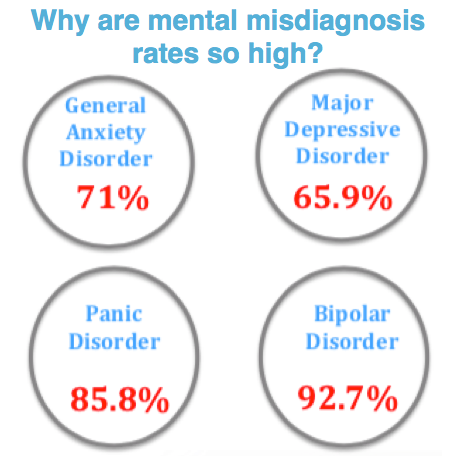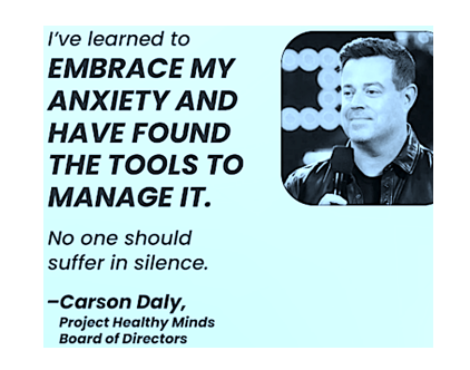An estimated 40% of the population will develop a mental condition before turning 40 years old. While staggering on its own, that 40% is hiding an issue with severe consequences to both individual mental health and the health care system: misdiagnosis rates.
Imagine seeing your doctor about a urinary tract infection and being diagnosed with bladder cancer. Then after having your bladder removed you find out there was nothing wrong with it in the first place. That’s what happened to my father. Fortunately this type of physical health misdiagnosis is rare. The same can’t be said for mental health misdiagnosis.
Misdiagnosis rates of common mental health conditions

Source: PubMed.gov:
Another form of misdiagnosis is over-diagnosis. According to Johns Hopkins Bloomberg School of Public Health, up to 60% of patients diagnosed with Major Depressive Disorder don’t have it.
The consequences of misdiagnosis
Misprescription can result in prescribing the wrong drugs and this can worsen existing mental conditions and even create new mental conditions. This self-sustaining cycle significantly contributes to the current mental health crisis.
Why misdiagnosis happens
Misdiagnosis is a complicated issue. The following factors contribute significantly and are set out to help you understand why YMI exists.
The wrong kind of data – Physical health diagnosis relies on objective, measureable data from blood tests, urine tests, X-rays and MRIs. Mental health diagnosis has no such tests, rather relying on what is called “self-reported” data. Usually this involves a subjective self-diagnosis by the patient that the mental health practitioners use to help determine what mental condition(s) might be present and what drug(s) to prescribe. The problem with a subjective approach is the lack of objective measurable data. YMI addresses this issue through an extensive list of questions with quantifiable answers.
Interpretive bias – We all have biases based on our education and life experiences. Psychotherapists are no different leading to inconsistent analysis. If you went to five psychotherapists you could receive five different diagnoses. YMI considers input from many psychotherapists to address bias and provide analytical consistency.
Lack of deep correlation – Humans are very good at abstract thought and letting our imaginations run wild. But we (including doctors) aren’t as good at understanding myriad possibilities presented by complex analyses. YMI uses advanced machine-learning to provide deep correlation by looking at far more possibilities than any human ever could.
Lack of time – We all know the cliché of the therapist exclaimning “time’s up” before getting anywhere. Psychotherapy is expensive and time-consuming. YMI’s machine learning works fulltime, never gets sick and never has to rush out to take the dog to the vet. YMI’s analysis is fast, deep and consistent.
Lack of whole-body approach – Your physical and mental “states” are intimately connected – physical issues can cause mental issues and vice-versa. The weight of this connection can be overlooked during diagnosis.
YMI’s predictive analysis involves genetic expressions, childhood developmental experiences, physical attributes, diet, activity levels, traumas, phobias, physical health and more so you can better understand yourself.
And understanding yourself is the first step in maximizing your life experience.




